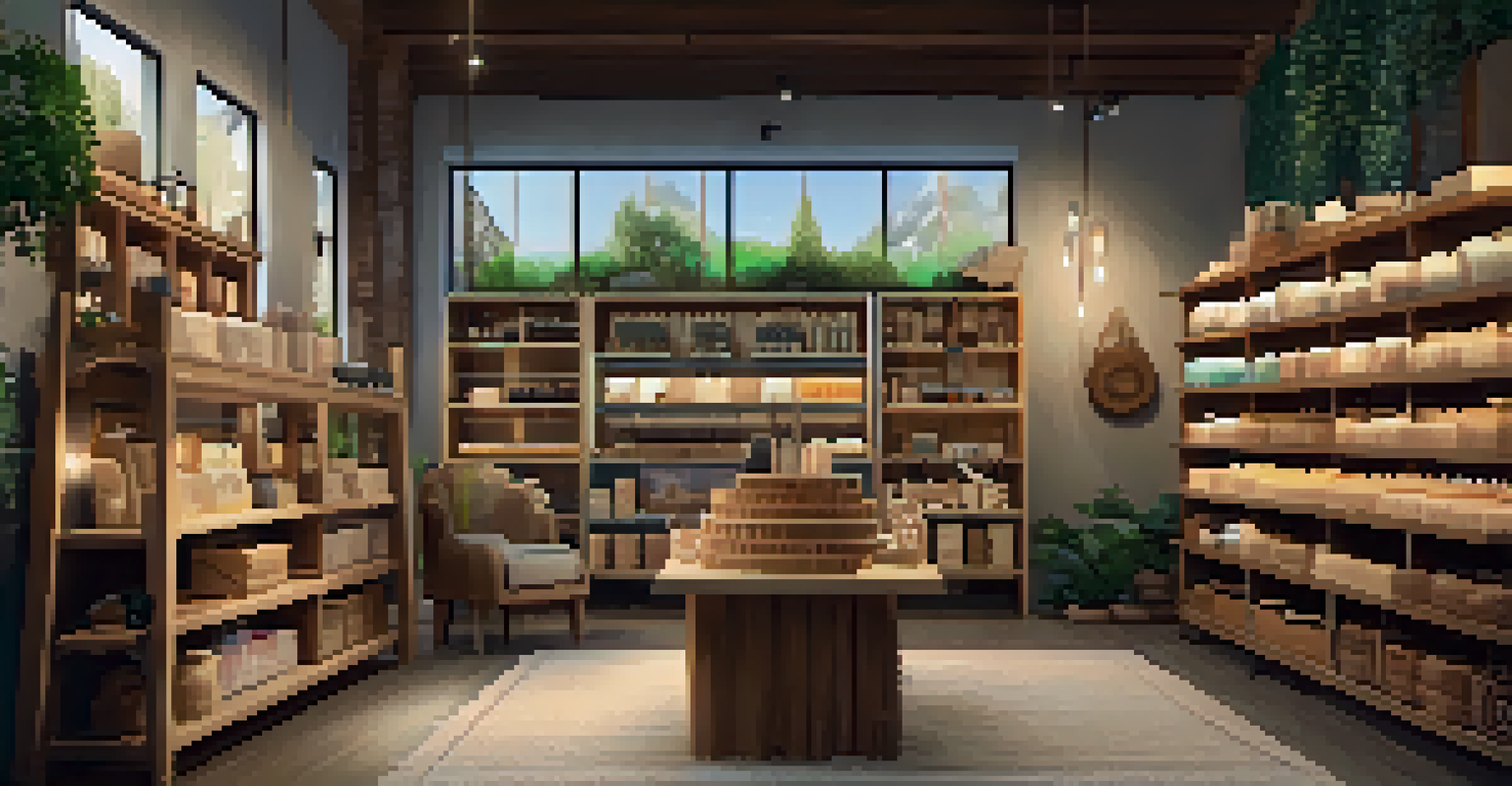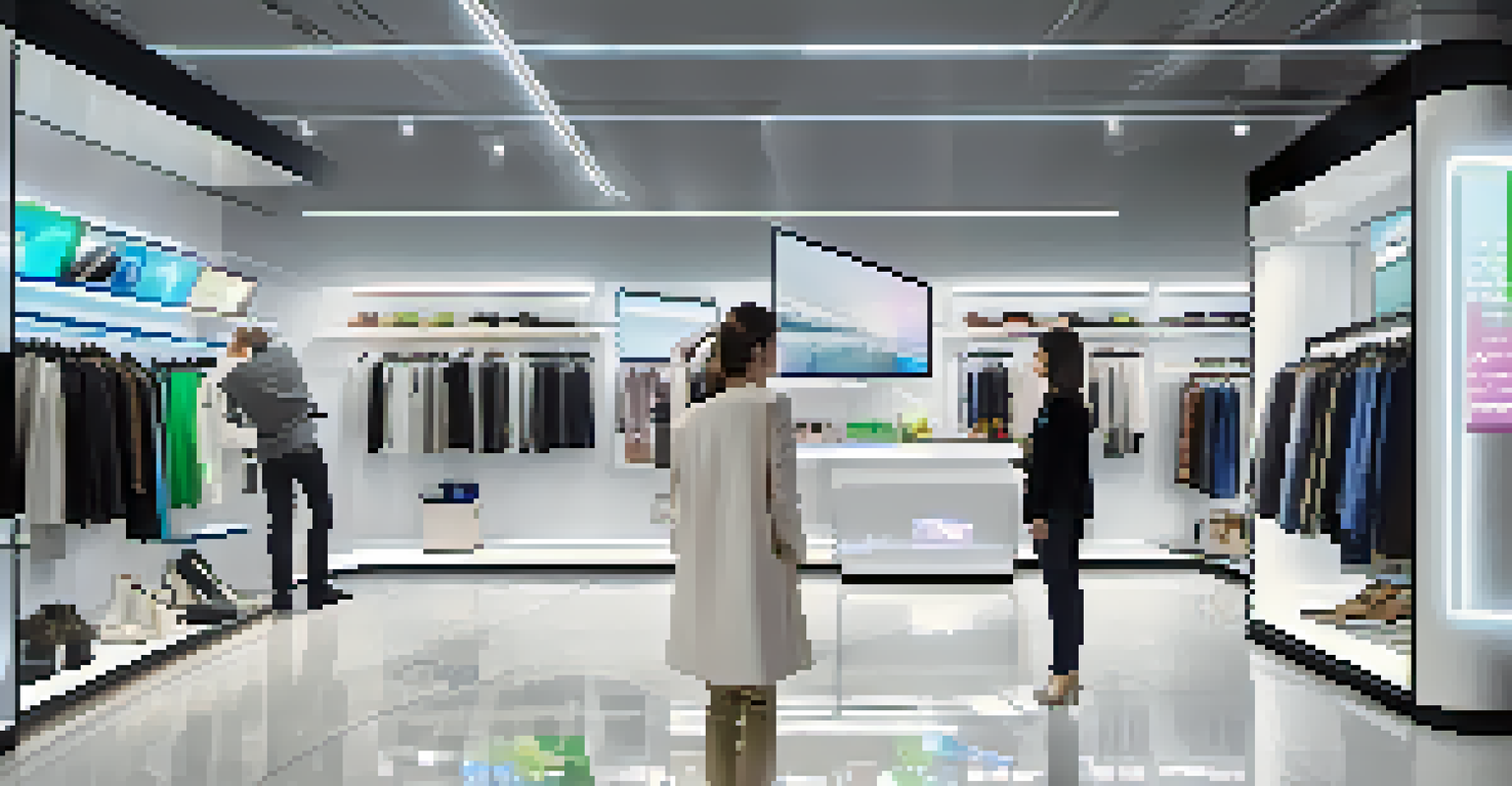The Future of Urban Retail: Trends and Innovations

The Rise of Omnichannel Retailing in Urban Areas
Omnichannel retailing is becoming a staple in urban environments, seamlessly integrating online and offline shopping experiences. As consumers increasingly expect convenience, retailers are adapting their strategies to meet these demands. For example, a customer might browse a store's website, purchase an item online, and pick it up in-store, blending the best of both worlds.
Retail is not about selling products, but about creating memorable experiences.
This approach not only enhances customer satisfaction but also drives foot traffic to physical stores, creating a more dynamic shopping environment. Retailers are using technology to track inventory in real-time, ensuring that customers find what they want, when they want it. This fluid interaction between channels is setting the stage for a more connected retail experience.
As we look to the future, the omnichannel model will likely evolve further, incorporating innovative technologies like augmented reality (AR) to enrich the shopping journey. Picture trying on clothes virtually before making a purchase; this is just one example of how urban retail is adapting to consumer preferences.
Sustainability as a Driving Force in Urban Retail
Sustainability is no longer just a buzzword; it’s a fundamental expectation from today’s consumers, especially in urban settings. Retailers are increasingly focusing on eco-friendly practices, from sourcing materials to reducing waste. For instance, some brands are opting for sustainable packaging and recycling programs to meet the growing demand for greener options.

This shift not only appeals to environmentally conscious shoppers but also enhances brand loyalty, as consumers feel good about supporting sustainable businesses. Urban retailers are collaborating with local suppliers to reduce their carbon footprint, creating a community-oriented approach that resonates with shoppers.
Omnichannel Retailing Grows Popular
Retailers are integrating online and offline shopping experiences to meet consumer demands for convenience.
As sustainability trends continue to grow, we can expect more innovations in eco-friendly retail solutions, such as energy-efficient stores and the use of renewable resources. This commitment to the planet is reshaping the urban retail landscape and setting a precedent for future generations.
The Impact of Technology on Urban Shopping Experiences
Technology is revolutionizing how we shop in urban areas, making the experience more convenient and personalized. From mobile payments to smart mirrors, tech innovations are enhancing the way consumers interact with retailers. For example, mobile apps provide personalized recommendations and promotions based on shopping behavior, creating a tailored experience for each customer.
The best way to predict the future is to create it.
Moreover, advancements in artificial intelligence (AI) and machine learning are allowing retailers to analyze consumer data more effectively. This means they can anticipate trends and stock products that meet local demand, ultimately improving sales. The use of technology also extends to customer service, with chatbots ready to assist shoppers at any time.
In the coming years, we can expect even more integration of technology in urban retail, such as the rise of cashier-less stores that use sensors and cameras to track purchases. These innovations will not only streamline the shopping process but also enhance customer engagement in unprecedented ways.
Experiential Retail: Creating Memorable Shopping Journeys
Experiential retail is all about creating memorable experiences that draw consumers into stores and keep them coming back. Rather than just offering products, retailers are focusing on providing unique experiences that resonate with shoppers. For instance, some stores host events, workshops, or live demonstrations that foster community engagement and create lasting memories.
This trend is particularly effective in urban areas, where consumers are seeking more than just transactional interactions. By transforming retail spaces into experience hubs, brands can cultivate deeper connections with their customers. Think of a bookstore that doubles as a café or a clothing store that offers styling sessions; these experiences make shopping exciting.
Sustainability Drives Consumer Choices
Today's shoppers expect eco-friendly practices from retailers, influencing brand loyalty and purchasing decisions.
As urban retail continues to evolve, we can expect to see even more emphasis on experiential elements. With the rise of social media, retailers also have the opportunity to create Instagram-worthy moments that encourage sharing and word-of-mouth marketing, further enhancing their reach.
Localism: The Shift Towards Community-Centric Retail
Localism is gaining traction in urban retail, as consumers increasingly prioritize supporting local businesses. This trend reflects a desire to contribute to the community and foster relationships with nearby shops. Retailers are responding by emphasizing local products, partnerships, and experiences that resonate with their neighborhoods.
For example, many urban stores are showcasing local artisans and craftspeople, providing a platform for unique products that can't be found elsewhere. This not only benefits the local economy but also enriches the shopping experience for consumers seeking authenticity. Additionally, retailers are hosting community events and collaborating with local organizations to strengthen their ties to the neighborhood.
As urban retail evolves, the localism trend is likely to grow, encouraging more businesses to adopt community-centric strategies. This shift not only supports local economies but also creates a sense of belonging for consumers, making shopping a more meaningful experience.
The Role of Data Analytics in Retail Decision-Making
Data analytics is becoming an essential tool for urban retailers looking to make informed decisions. By harnessing consumer data, businesses can gain valuable insights into shopping behaviors, preferences, and trends. This information helps retailers optimize inventory, tailor marketing efforts, and enhance the overall customer experience.
For instance, retailers can analyze foot traffic patterns to determine peak shopping times, allowing them to adjust staffing and inventory accordingly. This proactive approach not only improves efficiency but also ensures that customers receive the best service possible. Furthermore, data-driven insights enable retailers to create personalized marketing campaigns that resonate with their target audience.
Technology Enhances Shopping Experience
Innovations like mobile payments and AI are personalizing urban shopping, making it more convenient and engaging.
As technology continues to advance, the role of data analytics in retail will likely expand. We can anticipate even more sophisticated tools and techniques that will empower retailers to stay ahead of the curve and adapt to ever-changing consumer needs.
The Future of Urban Retail: Adapting to Change
The future of urban retail is all about adaptability, as businesses navigate an ever-evolving landscape. With the rise of e-commerce, changing consumer preferences, and technological advancements, retailers must be prepared to pivot and adjust their strategies. This adaptability ensures that they remain relevant and competitive in a fast-paced environment.
For instance, many retailers are reimagining their physical spaces to create more inviting and engaging environments that encourage foot traffic. This might include incorporating more communal areas, pop-up shops, or interactive displays that foster connection and creativity. By embracing change, retailers can transform challenges into opportunities for growth.

Ultimately, the future of urban retail will be defined by those who are willing to innovate and embrace new ideas. By staying attuned to consumer demands and leveraging technology, retailers can create a vibrant and dynamic shopping experience that resonates with urban dwellers.